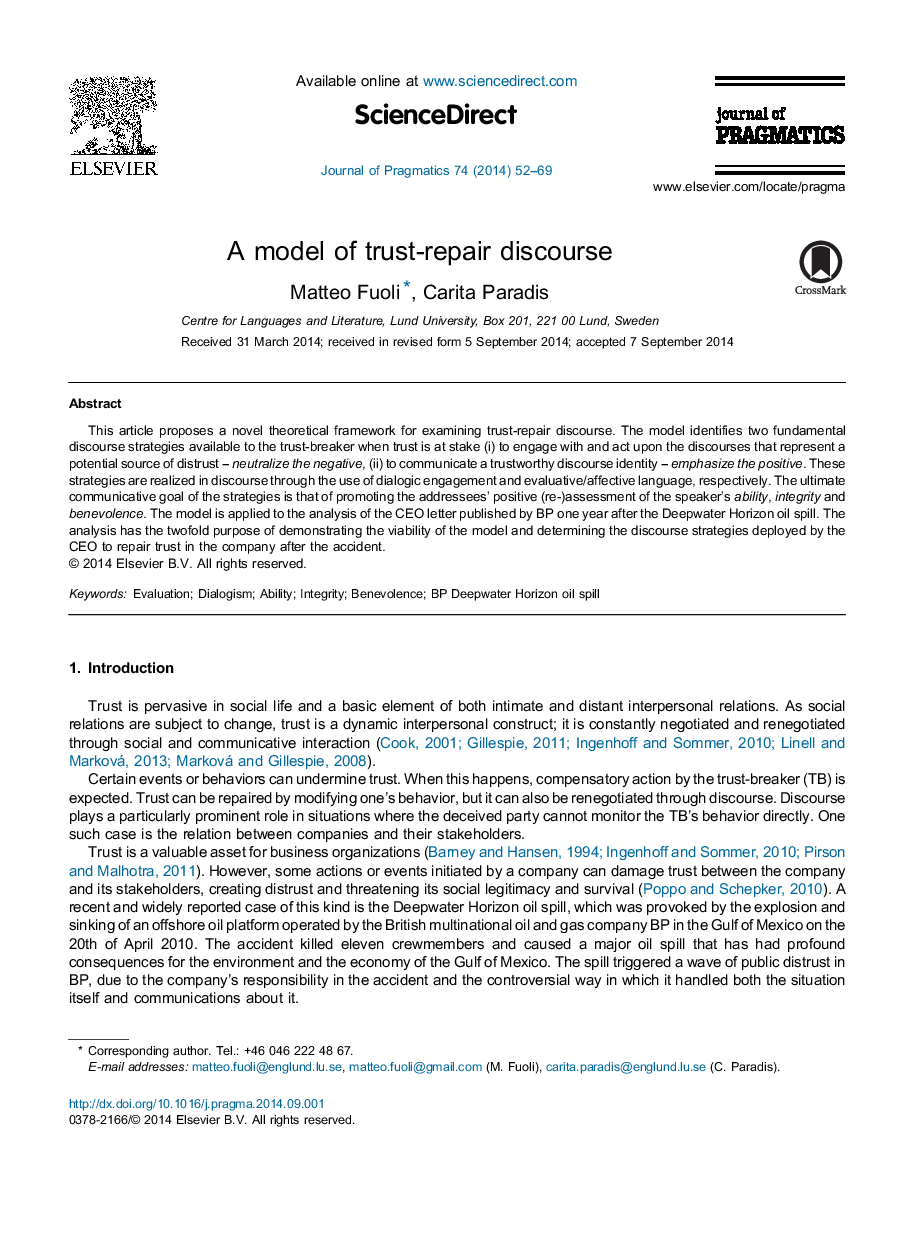| Article ID | Journal | Published Year | Pages | File Type |
|---|---|---|---|---|
| 932659 | Journal of Pragmatics | 2014 | 18 Pages |
•A descriptive and explanatory model of trust-repair discourse is proposed.•There are two basic trust-repair discourse strategies: neutralize the negative and emphasize the positive.•Repairing trust entails restoring perceived ability, integrity and benevolence.•The model is demonstrated by analyzing BP's CEO letter after the 2010 Deepwater Horizon oil spill.
This article proposes a novel theoretical framework for examining trust-repair discourse. The model identifies two fundamental discourse strategies available to the trust-breaker when trust is at stake (i) to engage with and act upon the discourses that represent a potential source of distrust – neutralize the negative, (ii) to communicate a trustworthy discourse identity – emphasize the positive. These strategies are realized in discourse through the use of dialogic engagement and evaluative/affective language, respectively. The ultimate communicative goal of the strategies is that of promoting the addressees’ positive (re-)assessment of the speaker's ability, integrity and benevolence. The model is applied to the analysis of the CEO letter published by BP one year after the Deepwater Horizon oil spill. The analysis has the twofold purpose of demonstrating the viability of the model and determining the discourse strategies deployed by the CEO to repair trust in the company after the accident.
